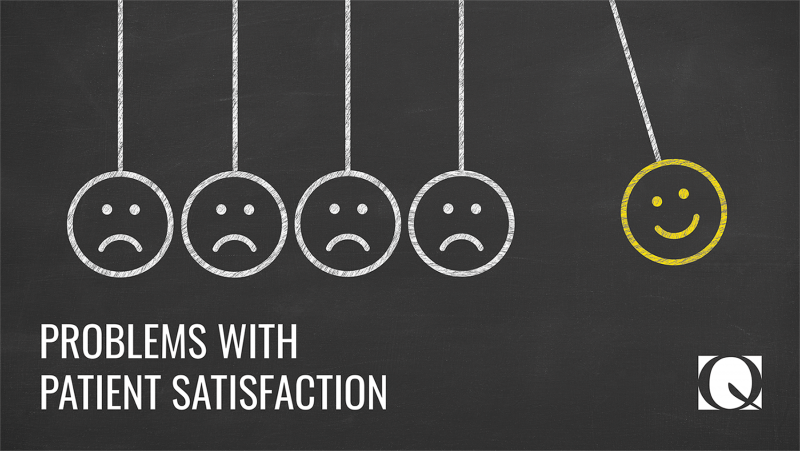The Affordable Care Act of 2010 established the Hospital Value-Based Purchasing program, implemented through the Centers for Medicare and Medicaid Services. In October of 2012, the program began withholding one percent of Medicare reimbursements from hospitals, allowing only those with high performance to earn it back; this withholding increased to 2% for FY 2017. Twenty-five percent of the determination of “high performance” is based on results of Hospital Consumer Assessment of Healthcare Providers and Systems (HCAHPS) patient satisfaction surveys. The newest data from the program reveals that more than 1,600 hospitals will receive bonuses from Medicare in 2017, which represents 200 less than the previous year. While the payments to the highest-performing hospitals will increase by more than 4% percent in FY 2017, the worst-performing hospitals will see a decrease of 1.83%. From 2016 to 2017, among the 2,879 hospitals with data for both years, 1,491 worsened and 1,388 improved, with commensurate changes in payment adjustments.
In theory, the goal of increasing accountability and transparency and creating more informed patients through “patient-centered care” is a worthy one; however, in practice, catering to patient satisfaction scores may be doing more harm than good.
In the early 1900s, the concept of “the customer is always right” became prevalent in big business; now, as the culture of hospitals shifts from one of health and wellness for patients to one of service for customers, the philosophy is that “the patient is always right.” Hospitals and providers are under significant pressure to satisfy their patients/customers at all costs, adding hotel-like features such as valet parking, room service meals, flat-screen TVs, and VIP lounges. With the specter of satisfaction scores looming over them, they are “teaching to the test” to manipulate conditions in order to achieve the best scores.
In fact, doctors are trying so hard to please their patients to get good scores on surveys that they are not necessarily providing the most medically-beneficial care. They are over-prescribing tests and medications, and shying away from delivering messages patients don’t want to hear, such as the need to make necessary lifestyle changes or to address concerning test results. Patient wants often do not align with patient needs, which puts doctors and hospitals in a tight spot. An expanded UC Davis study of patient satisfaction in the Archives of Internal Medicine found that those who were most satisfied with their doctors had higher healthcare and prescription costs, were more likely to be hospitalized, and were more likely to die within four years. Here is the catch 22 suggested in the survey – patients are more satisfied when doctors do more (more tests, more prescriptions, more procedures), but the more interventions are undertaken, the more risk is involved.
A survey done by Emergency Physicians Monthly of over 700 ER doctors revealed that 59% had increased the number of tests they prescribed as a result of patient satisfaction surveys; similarly, 55% of the respondents to a South Carolina Medical Association query stated that they had ordered tests that they felt were inappropriate due to pressure to perform on satisfaction surveys, and almost half had “improperly prescribed antibiotics and narcotic pain medication in direct response to patient satisfaction surveys.” On top of being poor medical practice, overtreatment is costly – the former administrator of CMS reported that, for example, overused prostate screenings cost at least $3 billion a year, and unnecessary antibiotics cost $1 billion a year (and encourage drug-resistant bacteria), with a total cost of $226 billion for all forms of unnecessary overtreatment that does not help patients, and another $55 billion a year related to the abuse of prescribed opiates. The idea that “more is always better” has taken root, with doctors who are rewarded for doing more, and penalized for doing less.
Doctors are not the only ones facing the backlash of satisfaction surveys. The majority of questions on the HCAHPS survey are related to nursing care, which has opened the door to complaints about a variety of things that have no bearing on medically necessary care. For instance, a patient may be on a medical diet post-surgery and report low satisfaction that he cannot have what he wants to eat. One nurse sums it up as an issue that “many patients have unrealistic expectations for their care and their outcomes.”
In an effort to reform the area of nursing to achieve higher scores, some hospitals are scripting nurses’ communications, which detracts from the personal disposition nurses typically exhibit that makes patients feel comfortable and cared for. Customer service skills are starting to be advertised as a qualification for hiring nurses, feeding into the idea that patients are customers and customers are always right, a dangerous proposition when these “customers” do not understand medicine. (Also dangerous is the hiring of non-medical staff to serve as “customer service representatives” to ensure that the desires of patients are met; in their attempts to make patients happy, they may provide things to patients who may want them but should not have them.)
Another potential concern is the slippery slope of tying reimbursement to patient satisfaction for safety net hospitals. The facilities that provide care to the underserved tend to have lower patient satisfaction scores because they have more challenging patients and fewer resources. Withholding funding would only exacerbate the disparities, and physicians might avoid those patients that are more challenging (e.g. those with mental health issues, lower socioeconomic standing, minorities) in order to avoid the risk of low scores.
In an effort to work with this new reality, patient satisfaction has become “commercialized,” creating a market for companies that create and administer surveys, as well as consultants and others who are hired to improve survey results for their clients. Even higher up, customer satisfaction executives are being hired into the c-suite. Often, this process represents a transformation of culture, rather than of care, attempting to make health care look and sound better rather than making those changes that would ultimately improve health care.
Working for patient satisfaction is not all bad. Happy patients reflect stronger relationships with caregivers, and these patients may be more willing to follow doctors’ and nurses’ advice during and after treatment. And, of course, hospitals are businesses that do depend on loyalty through return visits and recommendations to remain financially solvent. However, patient satisfaction is not an objective metric because it means different things to different people and ratings are based on patients’ expectations, rather than their objective experiences – it is not well defined, making it hard to measure. Subjective feelings about care experiences, such as waiting time, communication, and pain management, represent the type of satisfaction that is primarily measured, rather than specific, measurable items, like hospital-acquired infections, that are directly tied to quality.
The bottom line being put forth by critics of this use of patient satisfaction surveys is that they will not improve health care because they do not have a direct correlation to quality care. In fact, one study found that two-thirds of the hospitals that performed worse than the national average in three or more outcome categories (mortality, readmission, complications, etc.) scored higher than the national average on the HCAHPS question of whether the patient would definitely recommend the hospital.


